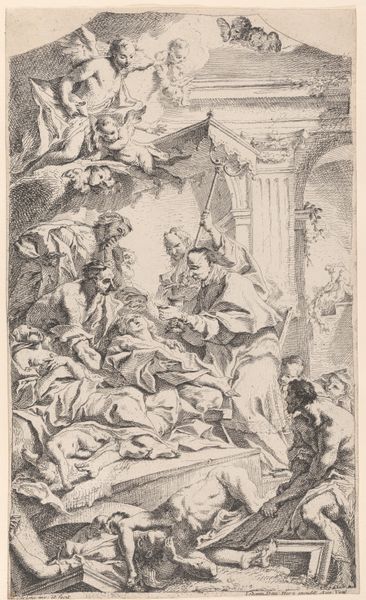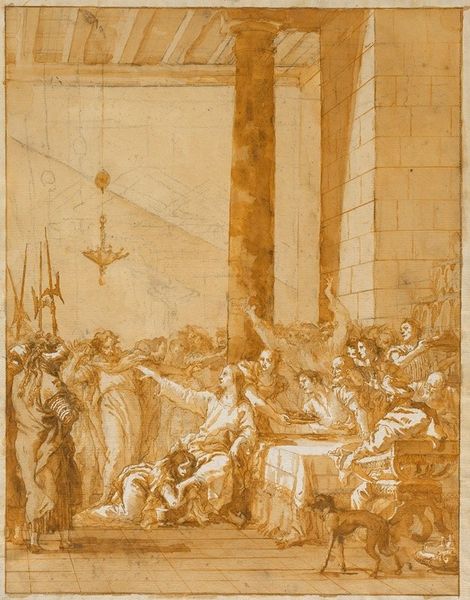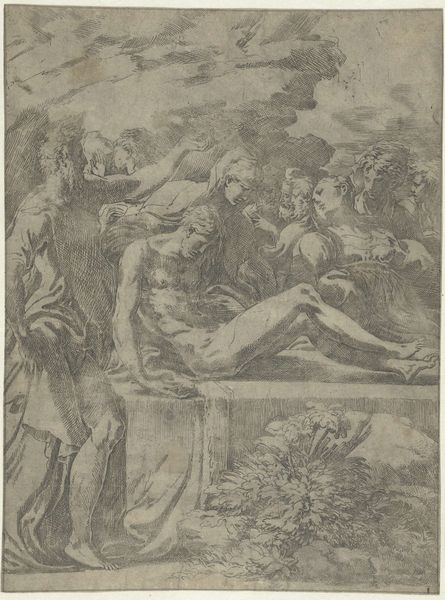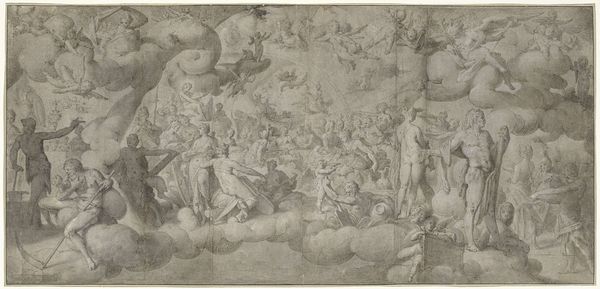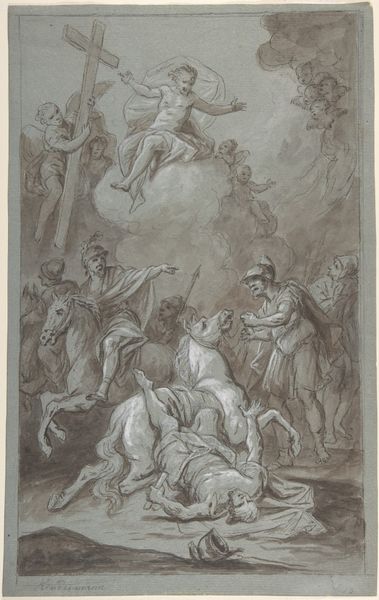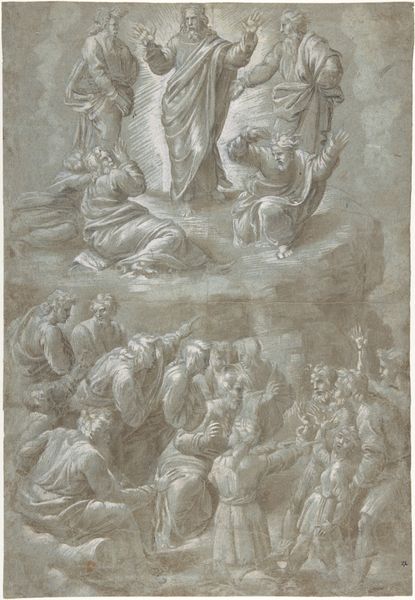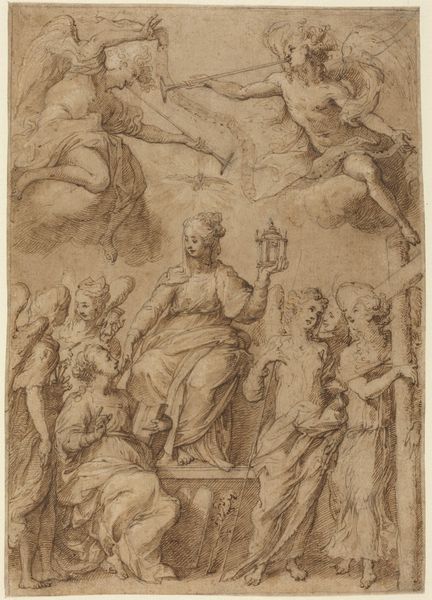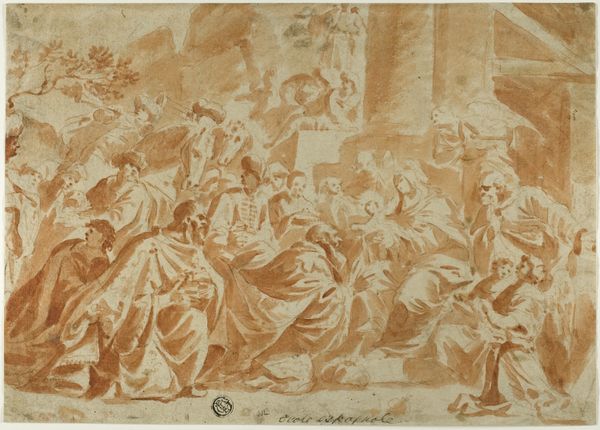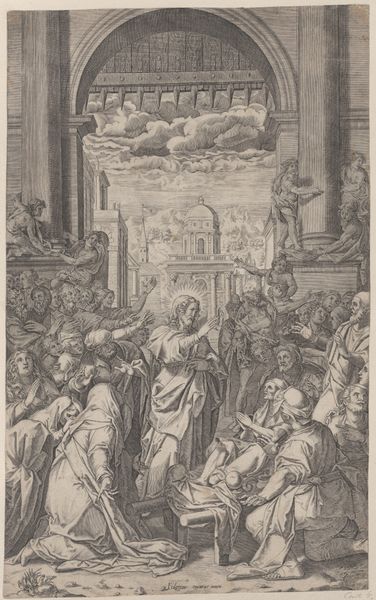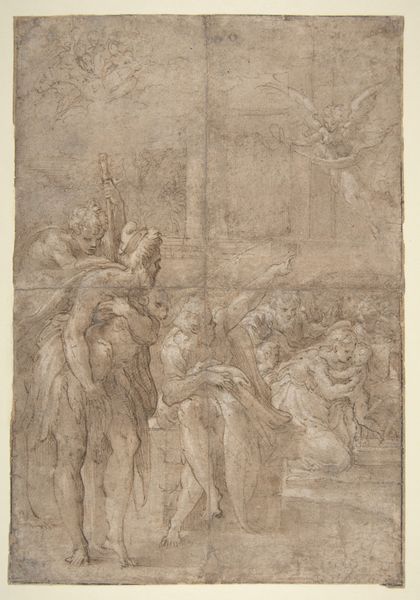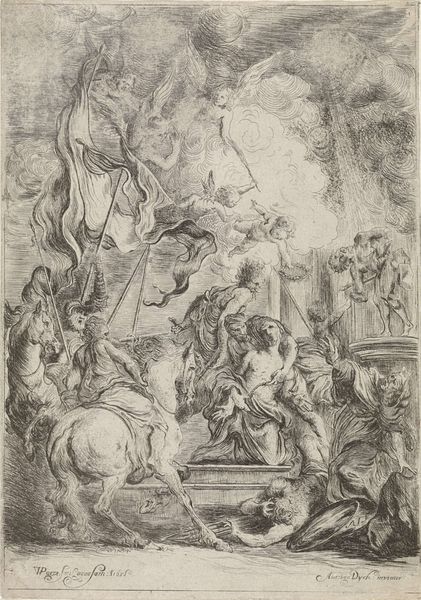
drawing, paper, watercolor, ink
#
drawing
#
toned paper
#
narrative-art
#
ink painting
#
landscape
#
figuration
#
paper
#
watercolor
#
ink
#
line
#
history-painting
#
early-renaissance
#
watercolor
Dimensions: height 184 mm, width 150 mm
Copyright: Rijks Museum: Open Domain
Editor: This is "Christus laat de kinderen tot hem komen," made around 1510, currently at the Rijksmuseum. It's an ink, watercolor, and wash drawing on toned paper. There's something really gentle in the figures, despite the chaotic composition and the imposing classical ruins. What do you see in this piece, especially considering its historical context? Curator: This work, even in its seeming simplicity, opens a space for intersectional dialogue. Considering its origins in the Early Renaissance, let's think about the power dynamics at play. We see Christ, a central figure, surrounded by children – often a marginalized group. What does it mean to portray them as worthy of his attention, within a patriarchal society? Editor: That's a fascinating point. It challenges the conventional hierarchy, almost subversively. The setting—a mix of ruins and nature—how does that play into it? Curator: Exactly! The crumbling architecture symbolizes the fading old order, making way for a new, perhaps more inclusive, spiritual era. It also asks us to think about what narratives have historically been privileged over others and whose stories we're *not* seeing in similar works of this era. What voices are absent and whose power is elevated by the narrative of this painting? Editor: So, it’s not just a sweet scene, but also a statement about social transformation. It makes you wonder about the artist's intentions regarding social reform. Curator: Precisely. It's a reminder that even ostensibly religious scenes can reflect—and even subtly critique—the sociopolitical realities of their time. Considering questions about power, privilege, and whose stories are being told. It invites us to actively engage with the artwork and see it as an invitation for social dialogue. Editor: That really gives me a new way to look at Renaissance art. Thanks, I'll keep those ideas about context and social narrative in mind!
Comments
No comments
Be the first to comment and join the conversation on the ultimate creative platform.
